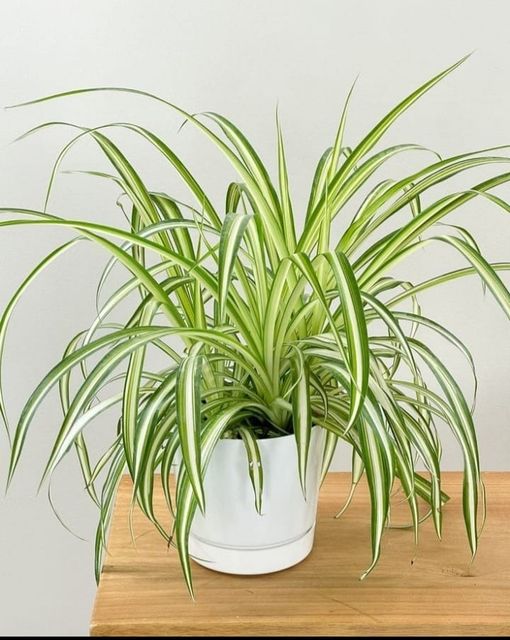
Spider plants, with their arching leaves and effortless charm, are more than just a stylish addition to your living space. Known for their adaptability and low-maintenance needs, these verdant wonders can thrive in a variety of environments, making them the perfect houseplant for even the busiest of plant parents.
Whether you’re a seasoned plant enthusiast or a newbie just starting your green journey, understanding the basics of spider plant care can help you cultivate a flourishing, lush companion. Let’s delve into the simple yet effective tips that will keep your spider plant happy and healthy.
Why Choose a Spider Plant?
The Spider Plant’s Appeal
Spider plants (Chlorophytum comosum) have been beloved houseplants for decades. Their resilient nature and attractive appearance make them ideal for any home. But what exactly makes them so appealing?
- Low Maintenance: They’re incredibly forgiving, perfect for those who might not have a green thumb.
- Air Purification: They help clean the air, removing toxins and improving indoor air quality.
- Adaptability: Spider plants can thrive in various lighting conditions and tolerate different levels of neglect.
Essential Spider Plant Care Tips
1. Finding the Perfect Spot
Where you place your spider plant can greatly influence its health and growth. Here’s what you need to know:
- Light Requirements: Spider plants prefer bright, indirect light. Direct sunlight can scorch their leaves, while too little light may stunt their growth.
- Temperature and Humidity: They thrive in temperatures ranging from 65°F to 75°F (18°C to 24°C) and appreciate a bit of humidity. If your home is dry, consider using a humidity tray or a room humidifier.
2. Watering Wisely
Overwatering is a common mistake that can lead to root rot. Here’s how to get it right:
- Watering Frequency: Allow the top inch of soil to dry out before watering again. Typically, this means watering every 1-2 weeks, depending on the season and light conditions.
- Water Quality: Spider plants are sensitive to fluoride, so using distilled or rainwater can be beneficial. If using tap water, let it sit for 24 hours to dissipate chlorine and fluoride.
3. Choosing the Right Soil
Good soil is the foundation of a healthy plant. For your spider plant:
- Soil Type: Use a well-draining potting mix. A standard indoor plant mix or a blend of peat moss, perlite, and pine bark works well.
- Pot Choice: Ensure the pot has drainage holes to prevent water from pooling at the bottom.
4. Feeding Your Spider Plant
Nourishing your spider plant with the right nutrients can encourage vibrant growth:
- Fertilizer: Use a balanced, water-soluble fertilizer every 4-6 weeks during the growing season (spring and summer). Avoid over-fertilizing, as this can lead to leaf burn.
- Frequency: Reduce feeding to once a month during the fall and winter when the plant’s growth slows down.
5. Pruning and Propagation
Keeping your spider plant in top shape involves occasional pruning and can be a fun way to propagate new plants:
- Pruning: Trim off any brown or yellowing leaves to keep the plant looking fresh. Cutting back overly long stems can encourage new growth.
- Propagation: Spider plants produce “babies” or plantlets. You can propagate these by placing them in water until they develop roots, then transplanting them into new pots.
Troubleshooting Common Issues
1. Yellowing Leaves
If your spider plant’s leaves are turning yellow, it might be a sign of:
- Overwatering: Ensure the soil is drying out between waterings.
- Nutrient Deficiency: Check if you’ve been fertilizing regularly and adjust if needed.
- Pests: Inspect for common pests like spider mites or aphids.
2. Brown Leaf Tips
Brown tips can result from:
- Fluoride Sensitivity: Using distilled water can help.
- Dry Air: Increase humidity or mist the plant occasionally.
3. Leggy Growth
Leggy or elongated growth may indicate:
- Insufficient Light: Move the plant to a brighter spot with indirect sunlight.
- Improper Pruning: Regularly prune to encourage bushier growth.
Conclusion: Enjoy Your Green Oasis
With just a few simple care tips, your spider plant can become a thriving centerpiece in your home. Their forgiving nature and easy upkeep make them an ideal choice for anyone looking to add a touch of greenery to their space. Remember to provide the right light, water thoughtfully, choose good soil, and enjoy the process of nurturing this charming plant. By following these straightforward care guidelines, you’ll ensure your spider plant not only survives but truly thrives, enhancing your home with its vibrant presence.
